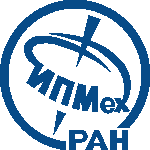
|
ИСТИНА |
Войти в систему Регистрация |
ИПМех РАН |
||
Energetic neutral atoms as a tool for the heliospheric boundary exploration: comparison of the Moscow model simulations with IBEX dataдоклад на конференции
- Авторы: Baliukin Igor, Izmodenov Vladislav, Alexashov Dmitry
- Международная Конференция (Конгресс) : COSPAR 2024 scientific assembly
- Даты проведения конференции: 13-21 июля 2024
- Дата доклада: 16 июля 2024
- Тип доклада: Устный
- Докладчик: Baliukin Igor
- Место проведения: Пусан, Корея, Республика
-
Аннотация доклада:
Analysis of energetic neutral atom (ENA) observations is a powerful tool for remote diagnostics, which enables studying the distribution of protons in the heliosphere. To probe the properties of the heliospheric boundary, observations must be compared with predictions of numerical models. One of the few sources of knowledge about the structure of the heliosphere is the data provided by the Interstellar Boundary Explorer (IBEX), which has been measuring fluxes of interstellar atoms and ENAs at 1 AU using the IBEX-Lo (0.01–2 keV) and IBEX-Hi (0.5–6 keV) instruments since 2008. In this talk, we will compare IBEX full sky maps of ENA fluxes with the results of the Moscow model calculations. The model considers both the globally distributed flux (GDF) and the Ribbon ENA populations from the inner heliosheath and outside the heliopause, respectively. The unique feature of the model is a detailed kinetic consideration of the pickup protons that form a supra-thermal component of protons in the heliosphere. This component is “parental” to the ENAs and originates in the supersonic solar wind region where pickup protons are picked by the heliospheric magnetic field. The calculations are based on the plasma and hydrogen atom distributions in the heliosphere calculated within the time-dependent kinetic-MHD model of the solar wind interaction with the local interstellar medium (Izmodenov & Alexashov 2020). We will discuss the data/model differences and consider the limitations imposed by the IBEX data on the parameters of the heliosphere model.
- Добавил в систему: Балюкин Игорь Игоревич